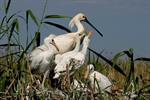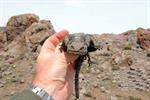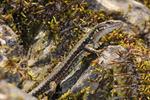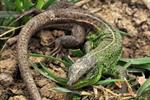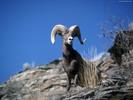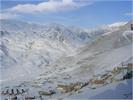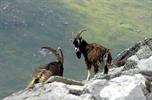The diversity of various types of animals, which inhabit and populate a defined ground or water area, is the animal kingdom. The first reports on the richness and diversity of animal life in Azerbaijan can be found in travel notes of Eastern travelers. Animal carvings on architectural monuments, ancient rocks and stones survived up to the present times. The first information on the animal kingdom of Azerbaijan was collected during the visits of naturalists to Azerbaijan in 17th century. Unlike fauna, the concept of animal kingdom covers not only the types of animals, but also the number of individual species.
The animal kingdom of Azerbaijan is very rich, partly due to diversity of its natural complexes. There are 97 species of mammals, 357 species of birds, 67 species of reptiles and amphibians, 97 species of fish and over 15 thousand species of invertebrates in Azerbaijan.
People use the animal kingdom resources for food, as well as for raw materials in industries and working power in field works. Vertebrates are used to produce meat, eggs, feather, leather, horns, as well as butter and technical oil. Their products are used to produce drugs, perfumes, fertilizers and fodder. The natural habitat of various types of animals is very different within the country. Some species populate special restricted areas (lakes, parts of mountainous areas) while others are spread throughout the country. For example, passerines can be found anywhere in the territory of Azerbaijan. Protozoa parasites are also registered in all areas of the country, depending on natural habitat of carrier animals (cattle, poultry, etc.). Among mammals, jeyran gazelles populate plain areas, Caucasian goat inhabits the Major Caucasus areas, most species of birds can be found in forests, some in water basins. Pest insects occupy different agricultural fields, while others populate defined biotopes only.
The Red Book of the Azerbaijan Republic includes 108 species of animals, including 14 species of mammals, 36 species of birds, 13 species of reptiles and amphibians, 5 species of birds and 40 species of insects.
A number of natural preserves have been created and the hunting rules were brought into effect for protection of fur and hoofed animals in Azerbaijan.
The golden eagle inhabits mainly mountainous areas. The Caucasus tetra occupies the sub-Alpine areas of the Major and Minor Caucasus, while the green head duck populates the Caspian Sea coast and inland water reservoirs. Goats and West Caucasus moufflons inhabit Nakhichevan, jeyran gazelles can only be found in Shirvan natural preserve, Bendovan and Korchay regions of Azerbaijan. The Caucasus goat populates western slopes of the Major Caucasus in Balakan, Qabala, Zaqatala and Ismayilly regions.
The country's fresh water basins and the Caspian Sea account for 30 species of fish. They are fished in the Kur River, surrounding lakes, as well as in the Mingechevir reservoir. Most of fish are anadromous or semi-anadromous (the young grow up in salt water and migrate to fresh water to breed after they reach maturity). The most valuable of anadromous fish are salmon, sturgeon, stellate sturgeon and beluga. Aspius, Chalcalburnus and eel are also anadromous fish. Sturgeon meat and caviar are highly valuable. Beside, the water basins of Azerbaiajn contain such valuable fish species as bream, sazan, rutilus kutum and others. Such fish species as herring are fished in the Caspian Sea. Due to the construction of a number of hydrotechnical plants on the Kur river after 1959, the regulation of the river water flow, as well as the Caspian water pollution led to the significant reduction in the number of valuable fish species. Three hatcheries (Kuragzi, Alibayramli and Kur experimental sturgeon hatchery) for melioration and fish-farming purposes were launched to restore the fish reserves and to increase the number of fish in species. Azerbaijan's fish-farming establishments and hatcheries account for breeding of 20 million sturgeons, 600 thousand salmons, over 800 thousand. A new hatchery with the capacity of 20 million sturgeons was put in commission in Khyly in 2000.
Birds
Buzzards float above many of the bald grassy hills (eg around Chukhuryurd/ Tskuryurt). White-tailed eagles have been spotted over the Bilasuvar marshes and Lammergeyers have been seen in the high mountains behind Zaqatala. The eastern edge of Turyanchay Nature Reserve is also good raptor-watching country and Imperial eagles have been spotted where dry hills with some juniper forest meet the turgay. Native Sapsanl/Falcon (Falconidae peregrinus Tunstall) numbers have dwindled to under two dozen pairs. A collection of rare birds of prey is easy to see but cruelly caged at Dashtvand Hotel (Massali) and Cannat Bagi (Alti Agach).
Supposedly present in the alpine zones are the very rare Caucasian snowcock, great rose finch and goldenstadt redstart. In Zaqatala Forest Reserve (restricted entry), there are black woodpeckers and Caucasian black grouse. The latter are found virtually nowhere else and are counted annually by energetic enthusiasts in early September.
Talysh pheasants (phasianus colchicus talisophensis lorenz), found below 1200m in the southern mountain foothills, have also been hunted to the edge of extinction. Rare white pelicans (Pelecanus onocratalus) may occasionally be seen in winter at Mingachevir, Nakhchivan and Xanbulaq reservoirs and along with flamingos (Phoenicopterus foseus pallas) on marshy Kizilagach Bay (Oct/Nov till Feb/ Mar). Waterfowl can be found on many of Azerbaijan's shallow lakes with little bustards plentiful on the coastal flats north-west of Davachi. In these areas ornithologists are less common than hunters.
Napier Shelton's 'Where to watch birds in Azetbaijan' is a personal, 112-page hardback volume including details of 30 top spots for ornithologists with rough hand-sketched maps and sighting-lists. Published locally in 2001 it has no ISBN number but is available via www.osme.org/osme/azerbk.html (15 GBP). Use in conjunction with the illustrated Collins Bud Guide (Svensson, Mullamey & Zetterstrom 1999), Georgian Birds by Jordania, Boeme and Kuznetsov published in Marl, Germany (2001) is an expanded, English translation of an illustrated 1987 Russian-language original.
Animals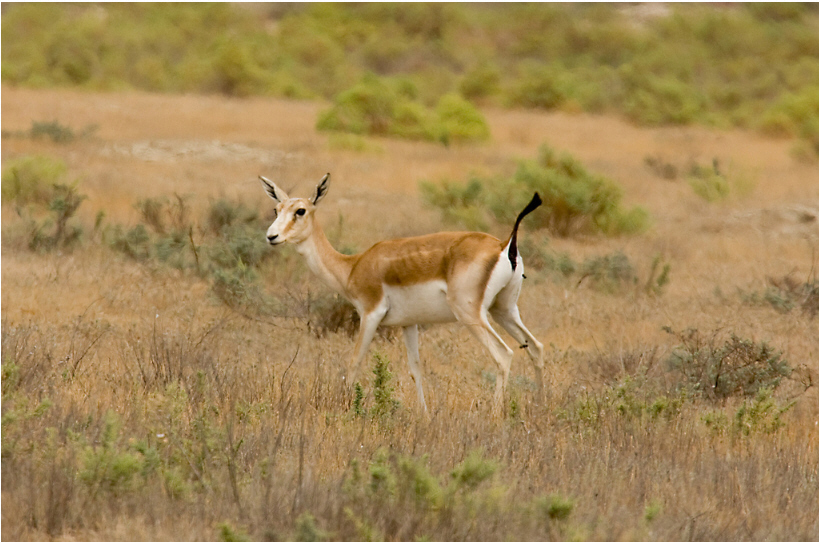 Tur mountain goats have long curly horns that make all too popular hunting trophies. These are increasingly hard to see but there have been recent sightings above the Ilisu road. In the forests above Zaqatala one can hear the calls of red deer and roe deer. There are doubtless wolves and bears in the mountains too, as cubs have been brought back to several restaurants to be caged in menageries.
Tur mountain goats have long curly horns that make all too popular hunting trophies. These are increasingly hard to see but there have been recent sightings above the Ilisu road. In the forests above Zaqatala one can hear the calls of red deer and roe deer. There are doubtless wolves and bears in the mountains too, as cubs have been brought back to several restaurants to be caged in menageries.
Delightful Ceyran, Caucasian gazelles (Gazella subgutturosa Guldenstaedt) were once common in Azerbaijan but were hunted almost to oblivion. Some herds now survive within Shirvan Nature Reserve. Caspian seals (Phoca caspica Gmelin), claimed to be the world's smallest, are found seasonally (spring/summer) on the Caspian islands and at the extremities of Absheron Peninsula. The total population is now estimated at 300-400,000 but is dwindling rapidly due to pollution in the Caspian. Snakes are all too common. Gurza (Vipeia lebetina) are found across the country and a gang of them was milked for venom at Zira snake farm till the critters escaped. The rarer Gadyuka can kill in 40 seconds.
|
Important information on visa: If you're going to vizit Azerbaijan check the latest information of visa regime here >>>. Regularly updated data, helpful advice and expert guidance. If you have any questions, please do not hesitate to contact us. |



